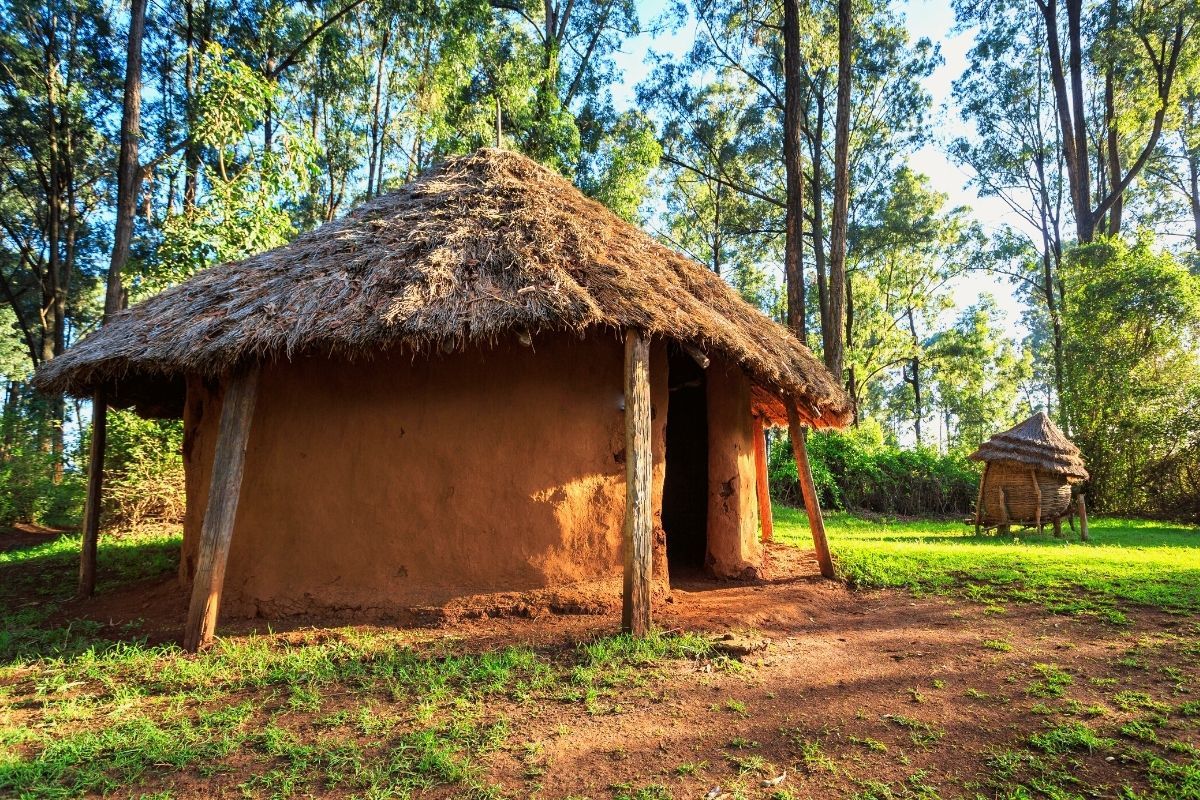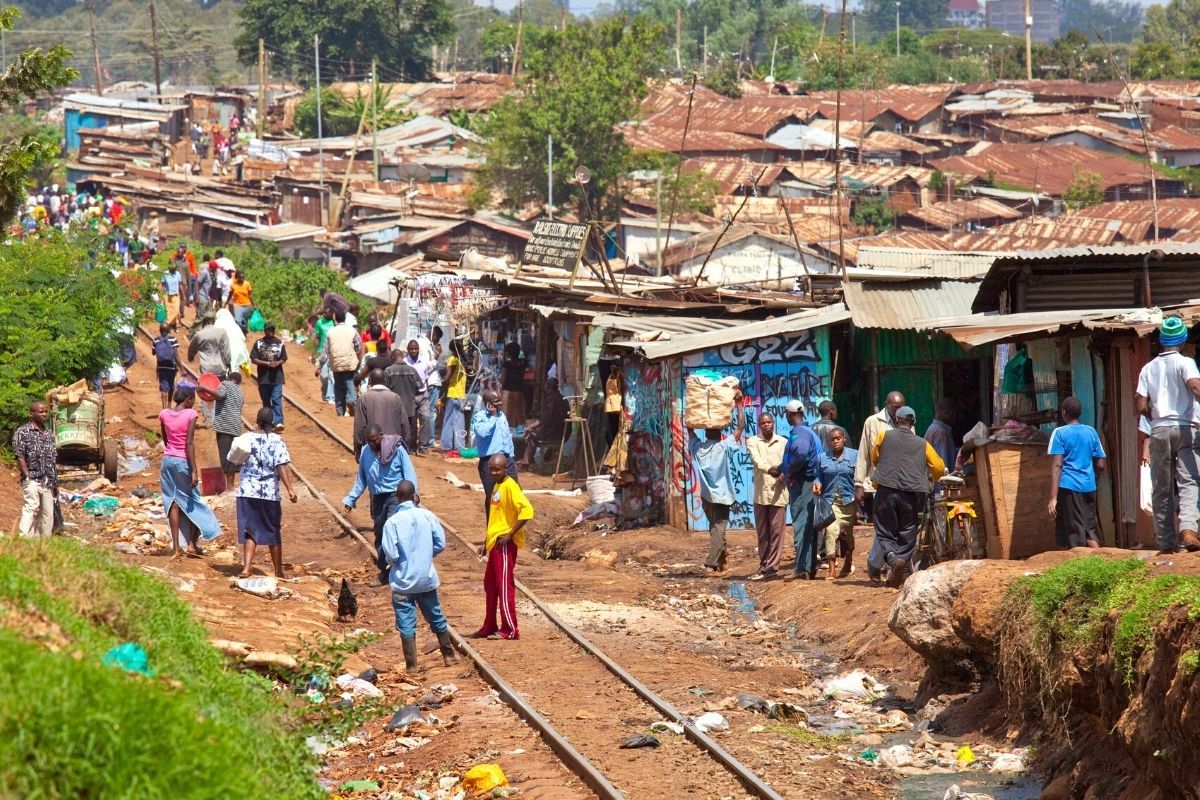
Kibera Slum: Tours and Guided Visits
One of the largest slums in the world, Kibera offers visitors an insider view into one of Kenya’s most impoverished regions. By participating in a Kibera Slum tour in Nairobi, you’ll learn all about the city’s colonial era and how this greatly impacted Kenyan citizens, as well as how the government is working to upgrade the neighborhood, filling the community with hope for a better future.
Read Full Guide
Checking Musement... (0/24 providers)
















































One of the largest slums in the world, Kibera offers visitors an insider view into one of Kenya’s most impoverished regions.
By participating in a Kibera Slum tour in Nairobi, you’ll learn all about the city’s colonial era and how this greatly impacted Kenyan citizens, as well as how the government is working to upgrade the neighborhood, filling the community with hope for a better future.

Here's all you need to know about Kibera Slum, one of the most insightful sightseeing tours in Nairobi.
What are the best Kibera Slum tours in Nairobi?
Kibera Slum tour in Nairobi
In this small group walking tour, you’ll follow your tour guide to Kibera Slum, which is among the five largest slums in the world. Your guide works for a non-profit organization and can provide a unique perspective of the area as they take you through its web of roads.
You’ll discover the history behind the neighborhood and how it grew to become one of the major slums across the globe, as well as future development plans in place to improve the region.
You’ll also meet members of the community who can share their own personal experience of living in the slum, helping you to understand life in Kibera.
Private Kibera Slum tour in Nairobi
If you’re looking for greater personalization than a group excursion can provide, consider booking a private Kibera Slum tour in Nairobi. You’ll wander the area with an enthusiastic local who was born and grew up in the slum, providing you with tidbits of information only an insider would know.
You’ll visit a workshop, which repurposes animal bones into a selection of items, including jewelry and bottle openers — one of the most unique facilities in Kenya.
You’ll also discover the main marketplace where locals go to get their daily essentials, as well as your guide’s own home. Here, you can see how a resident in the slum lives and connect with the locals, experiencing their warmth and hospitality for yourself.
This tour enables you to see behind the rough exterior of the slum to unveil the vibrant community that lives within its confines.
Are there any combos available with Kibera Slum tours in Nairobi?
Nairobi City and Kibera Slum tour

Experience both sides of Kenya on this combination Nairobi sightseeing tour. You’ll begin your day by heading to the city’s famous giraffe center, which is located within the Nairobi National Park. Here, you’ll have the opportunity to learn about the endangered Rothschild’s Giraffe and feed one of these gentle beings from your hand.
You’ll then continue on to Kibera Slum to discover the roots of this troubled corner of the country. Meet the locals and have your preconceptions of the slum turned upside down as you see the sense of community that has developed here.
Kibera Slum and Bomas of Kenya tour in Nairobi

This Kibera Slum tour in Nairobi focuses on Kenyan culture, showcasing how the local community lives, with visits to the area’s craft workshops, schools and homes. You’ll also head to Bomas of Kenya, where you’ll watch a vibrant performance that combines music and dance.
You’ll watch more than 50 traditional dances performed by talented individuals in colorful attire, which display Kenya’s past and present, providing you with a well-rounded overview of this nation.
Which places are visited?

On a tour of Kibera Slum, you'll spend most of your time in the slum itself learning about its history and future.
Kibera Slum is one of the poorest areas in Kenya, with the majority of its inhabitants earning less than US$2 per day. As well as high levels of poverty, many Kibera locals suffer from poor health, with more than 10% of the population living with HIV.
The population of Kibera Slum is greatly contested with a 2009 census reporting approximately 170,000 residents, while others suggest that over a million people live in this poverty-stricken region, which covers just 2.5 square kilometers of Nairobi.
Kibera began as a settlement for Nubian soldiers in the forests surrounding the city after British colonization meant only European residents could reside within Nairobi’s center.
After Kenya gained independence in 1963, many residents of the slum lost all rights to their land or homes, and the government was absolved of any responsibilities toward its tenants. Those who could not afford housing were forced into the slum, causing it to be the overpopulated region it is today.
How much do Kibera Slum tours in Nairobi cost?
Those who wish to participate in a group Kibera Slum tour in Nairobi can do so for between US$30 and US$50 per adult, depending on the option you select. These excursions operate in groups limited to 20 participants and children between the ages of 6 and 11 benefit from a small discount of between US$5 and US$10 each.
Private Kibera Slum tours in Nairobi cost between US$60 and US$70 per person of any age, and you can select up to 15 travelers per excursion.
Combination Kibera Slum and city tours in Nairobi are also private affairs, and can accommodate up to seven guests. You’ll pay US$120 per adult and between US$50 and US$60 per child, aged between 2 and 10.
A tour that includes Bomas of Kenya costs between US$130 and US$140 if you choose to travel solo. However, if you book as a group of two or more individuals, you’ll each pay US$90. These excursions are capped at eight guests, enabling you to have an intimate experience.
What is included?
Kibera Slum tours in Nairobi include the services of a professional guide, who is often a resident of the slum themselves and who will guide you through the streets, providing you with a thorough introduction to all aspects of the neighborhood.
In the case of combination tours, you can expect all entrance fees and transport to be covered in the overall price of the day trip, and in most cases, you’ll also be provided with beverages to keep cool in the hot Kenyan sun.
Where does it start?
The majority of Nairobi slum tours include a complimentary accommodation pickup service. In order to benefit from this, you’ll simply select your hotel from a dropdown list upon booking and, on the day of your excursion, await collection from your friendly guide in the lobby.
In some cases, you may instead be asked to meet at a central location in the city. You can find out all the information regarding the starting point of each tour by consulting its booking page. This will enable you to plan your day and arrange any necessary transportation ahead of time.
How long does it last?
Kibera Slum tours in Nairobi typically last between 3 and 6 hours, depending on how detailed an experience you seek. This gives you plenty of opportunity to discover how the neighborhoods' residents live, make introductions with the locals and visit a number of landmarks within the slum.
If you choose a combination Kibera Slum and Bomas of Kenya tour, you can expect it to last around 8 hours instead.
Is it wheelchair friendly?
Because of the nature of the destination, Kibera Slum excursions are generally not suitable for wheelchair users. Instead, those with limited mobility can choose from a wide range of outdoor activities and tours in Nairobi.
When is the best time for a Kibera Slum tour in Nairobi?
The best time for a Kibera Slum tour is between January and February or from June to September, outside of the rainy seasons. From June to September you'll experience milder temperatures in the range of 16 to 20 degrees Celsius, making it ideal for exploring outside.
Travel tips
- Before deciding to visit Kibera or any informal settlement, consider the implications and ethics involved.
- Choose tours led by local community members or organizations that work for the betterment of the community.
- Contribute to the local economy by purchasing goods and services from local businesses and artisans.
- Approach the community with respect and dignity, avoiding any behavior that objectifies or exploits residents.
- Seek permission before taking photographs or engaging in activities, respecting individuals' rights to privacy and dignity.
- While visiting such areas can increase awareness of the inequalities and hardships that exist, the ultimate aim should be to support the community in a meaningful and sustainable way.

